The Falkland Islands. An archipelago off South America where penguins outnumber people and the scarcely populated area outside of the capital is collectively known as 'camp'. It's no wonder then, that when the Falklands landed on my radar I was keen to explore this remote and wild land. A land that still holds scars from a battle over its sovereignty. A land which is home to many breeding bird species (including five species of penguins!). And a land where sea lions and elephant seals come to rear their young as pods of orcas swim the coast in search of an easy meal.
With over 700 islands to explore, it's not possible to discover everything the Falklands have to offer in one short holiday. The following itinerary is designed to make the most of the Falkland islands if, like me, you have limited time to enjoy this incredible destination to its fullest.
So let's get started!
East Falkland
East Falkland is the largest of the Falkland Islands and where I’ll be starting my adventure. It is also home to the capital city Stanley. At around 2,400 residents, Stanley is one of the smallest and most remote capital cities in the world.
Getting There
The quickest way to get to the Falklands from the UK or Europe is with the RAF Airbridge which departs from Oxford. The flight takes around 22 hours including a stop in Ascension Island. Alternatively, LATAM Airlines offer a link from Santiago, Chile, on a weekly basis (this may be increasing to twice weekly in the future).
Stanley
.jpg)
Stanley is the colourful capital city of the Falkland Islands and where the large majority of Falkland Islanders live. The proud British heritage is clear in the streets of Stanley, with the classic red telephone boxes, a double-decker bus, and English pubs leaving no doubt about the Falkland's allegiance with the UK. However, the islanders haven’t forgotten the battles that took place to allow them to live this way. War memorials and monuments stand testament to the soldiers who fought to keep the Falklands British.
There is plenty to do in Stanley and its compact size means it’s easy to explore on foot. Some highlights include a visit to The Historic Dockyard Museum to learn the story of the islands' unique heritage and tumultuous past, seeing the iconic whalebone arch that stands tall in front of the world’s southernmost Anglican cathedral, and taking a walk along the waterfront.
While in Stanley, there are various accommodation options which range from fully fledged hotels, to low-key B&Bs. My pick is the Malvina House Hotel which sits in a prime position overlooking the waterfront and has a fantastic in-house restaurant.
Gypsy Cove
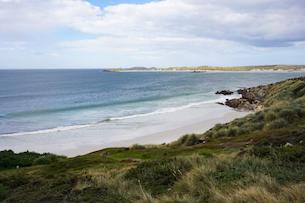
Penguins can be visited in many places around the islands, but you don’t have to venture far from the capital to find them. A short 15-minute drive from Stanley is where you’ll find Gypsy Cove, a small but beautiful white sand beach that is home to the near threatened Magellanic penguins. Many other birds also nest on the rocky cliffs overlooking the beach.
The surrounding land is part of a National Nature Reserve, making the perfect backdrop for a scenic walk around the headlands.
To get to Gypsy cove from Stanley, go East towards the airport before turning north and heading past Whalebone Cove (where you'll find the shipwrecked Lady Elizabeth). The journey is approx 6.5kms and makes for a great walk if you feel like donning your hiking shoes!
Goose Green

Goose Green plays an important role in the history of the Falkland Islands. It's the site of the 1982 'battle of Goose Green' and where 114 residents were held hostage in the community hall. Today Goose Green has been restored to the tranquil area it once was before the bloody 2-day battle between British and Argentine forces took place.
Goose Green is also home to the world’s most southerly suspension bridge. The bridge is no longer in use but makes an impressive and slightly surreal sight.
San Carlos
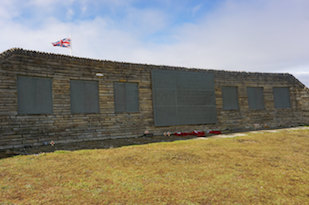
Another infamous battle took place at San Carlos. San Carlos is the site of the British landing during the war of 1982 and now hosts a small museum paying tribute to the war and the soldiers who lost their lives. There is also a British war cemetery located here on the edge of the bay.
You can visit both Goose Green & San Carlos on a battlefield tour, where you'll see memorabilia from the war and learn more about the history of the Falklands. The tour starts and finishes in Stanley. Alternatively, you can end the day at Darwin, taking the opportunity to explore the area further before relaxing in the comfort of Darwin House.
Volunteer Point

At Volunteer point you’ll find the world's most accessible king penguin colony, making it a popular spot for visitors in search of these majestic birds. It's a truly memorable experience watching the hoards of penguins preening and caring for their young while listening to the soundtrack of their constant chatter. Gentoo and Magellanic penguins also live at Volunteer Point, as do other birds such as steamer ducks, ruddy-headed geese and white bridled finches.
Volunteer beach is not to be missed either! Stretching over 2km along the east coast, this pristine white sand beach lies approx. 65 km's north of Stanley.
The last leg of the journey to Volunteer Point is off-road, and can only be reached by 4x4s driven by locals who know the way! Nobby's Tours offers day trips to the area with ample time to explore once you get there.
Outer Falkland Islands
With so many islands to discover, it makes sense to explore beyond the two major settlements - East & West Falkland. However, only a handful of the Falkland's outer islands are inhabited, with around seven offering accommodation for visitors. Four such islands are Pebble, Carcass, Sea Lion and Weddell.
Getting Around the Islands
Transport to and between the outer islands of the Falklands is easy with the local government air service, FIGAS. FIGAS operate daily (demand depending) and their fleet of small passenger planes make for an enjoyable and convenient way to explore the islands.
Pebble Island

Pebble Island is a contrast between sandy beaches, rocky mountain ranges, grassy plains and shallow wetlands. It’s also where you’ll find the semi-precious stones the island took its name from. The island is rife with more than 40 species of bird life and is officially recorded as an important bird area. Here you’ll find Gentoo, Rockhopper, Macaroni & Magellanic penguins, as well as the imperial cormorant, waterfowl and black-necked swans.
On Pebble Island you can also find relics of the war including the HMS Coventry memorial, Argentine Learjet memorial, and the remains of an Argentinean Dagger C-437 shot down on the 23rd May 1982.
Pebble Lodge is the only accommodation on Pebble Island. The lodge is a homely, comfortable environment and the food is outstanding!
Carcass Island
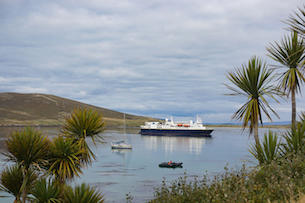
Carcass Island is privately owned by Rob & Lorraine McGill and, like many of the islands is run as a sheep farm. But judging by the sheer number of birds and marine mammals who also live here, the question of who really owns the island is up for debate.
Despite the rather unfortunate sounding name (my mind was running wild!), the island was actually named after the HMS Carcass – a vessel that surveyed the island in 1766.
A great place for walking, or simply enjoying the scenery and watching the bird life. Carcass Island is a true nature lover’s paradise.
On Carcass Island, you can stay at the McGill's own lodge accommodation. Here you'll be offered freshly baked sweet treats that will keep you coming back for more!
Weddell Island
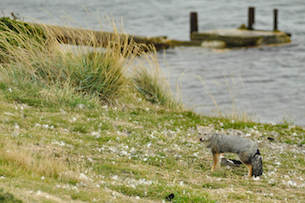
Weddell Island is the largest of the Falkland's outer islands. The 63,000 acres play host to a diverse wildlife, including introduced species such as foxes and almost unbelievably, reindeer!
Gentoo and Magellanic penguins can also be found here, along with sea lions and caracara. Dolphins play in the waters nearby, while albatross and petrels feed offshore.
Climbing Mt Weddell is a must-do walk that rewards you with 360-degree views of the island at the top.
The Weddell Island Lodge offers two comfortable self-contained apartments for visitors to relax in. Your hosts Jane & Martin will make sure your stay on Weddell is a memorable one!
Sea Lion Island
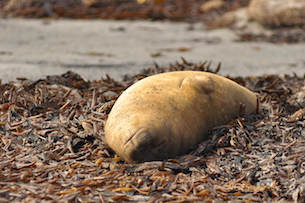
Sea Lion Island is a popular destination with visitors to the Falklands and for good reason! At just over 5 miles long and a smidge more than a mile wide, it is an excellent place to explore by foot.
The perfect place for wildlife watching, Sea Lion Island is home to the Falkland’s largest elephant seal breeding site. Three species of penguins and countless other birds also inhabit this island. If you're lucky, you'll be able to spot the orcas known to swim offshore - preying on young seal pups.
On Sea Lion Island, stay at the strategically positioned Sea Lion Lodge where you can view penguins right from your window!
Are you ready to plan your Falkland Islands adventure? Here are some parting tips to ensure your holiday goes according to plan!
- Visitors to the Falkland Islands must have a return ticket, proof of accommodation, sufficient funds and adequate travel insurance.
- Visitors from some countries may need a visa. To check if your country is exempt check the Falkland Islands government website.
- Remember to also check visa requirements for any countries you plan on having a stopover in (i.e. Chile or Ascension Island).
- As the RAF Airbridge operates out of the UK Ministry of Defence facilities, certain nationalities are restricted from flying on this service.
- The currency on the islands is the Falkland Island Pound. It has the same value as the UK pound and they can be used interchangeably.
- English is the official language, but Spanish is also spoken by many locals.
- The Falklands have strict biosecurity regulations. Things to watch out for include food and outdoor equipment (fishing gear, hiking shoes).
*Reproduced with permission from blogilicious.com- the world’s largest search and discovery platform for travel blogs
Related
Comments
Comments are disabled for this post.

.png)




